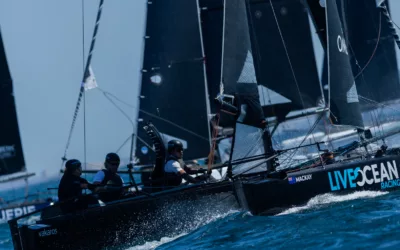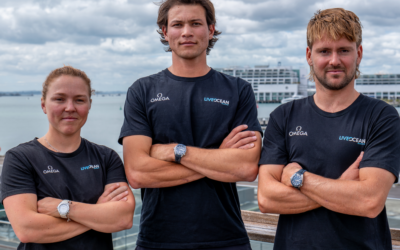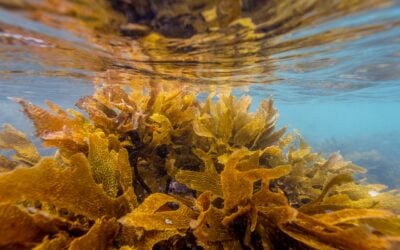A new multi-media series by marine conservation charity Live Ocean, in partnership with New Zealand Geographic, records the voices of those who can remember the former bounty of the Hauraki Gulf—their Songs of the Sea. It asks the question; what future do you want for the Hauraki Gulf?
Songs of the Sea is an innovative new media project that uses archival photography, film and audio to tell personal stories of the Gulf’s past abundance, and highlight what has been lost. These stories aim to inspire a new generation who are tasked with the responsibility of restoring the vitality—the mauri—of the Hauraki Gulf.
Sue Neureuter’s account of growing up visiting the Noises Group, just north of Waiheke is the first of the series. It has been in her family since the 1930’s, and she has witnessed the decline in marine life and seabird population first-hand.
“When Mum first got to the Noises in the late fifties, Dad used to make her row out and he’d put his rugby jersey on and plop over the side and pick crayfish up and dump them around her feet” she says.
Crayfish are now ‘functionally extinct’ in the Hauraki Gulf, with barely 10% of the original breeding population remaining outside marine reserves. Only four of the fifteen most commonly caught fish in the Gulf are at or above sustainable levels and eleven are in danger of local extinction.
Other voices in the series include Keith and Ailsa Lewis, pioneer divers from the 1960s, as well as wisdom from beyond the grave from legendary marine advocate Wade Doak and kaumatua Laly Haddon. With the permission of their families, Songs of the Sea uses archival interviews to share their experiences.
Sailors and founders of Live Ocean, Peter Burling and Blair Tuke, are urging New Zealanders to work together and step up to the challenge of restoring the Hauraki Gulf to its former abundance.
“We’ve lost so much in 50 or 60 years but for the younger generation, we tend to think what we’re seeing today is ‘normal’. It’s not. We’ve talked to lots of people who remember the boil-ups that used to be common in the Gulf—schools of trevally as far as the eye can see, hapukū in close to shore and seabirds in their thousands,” says Peter Burling.
“The Hauraki Gulf used to be one of the great coastal marine ecosystems of the world. Above the waterline it still looks great, but when you go under water, it’s a different story,” says Blair Tuke. “In the inner gulf, the reefs are a patchwork of kina barrens… bare rock where there should be kelp. As you come further into the harbour the effects of sediment on the seafloor and visibility are really obvious. The balance has changed, and it’s frightening to see this decline.”
Nearly one third of the world’s marine mammal species live in or visit the Hauraki Gulf, and in the past two decades, no-take marine protection has increased just 0.05%, to 0.3%. Internationally, scientists are demanding 30% protection, by 2030.
Scientists say there is no one single threat. The decline is caused by a combination of fishing pressure, invasive species, land-based activity and climate change—but it is our collective responsibility to listen to the songs of the sea, and be the guardians of one of New Zealand’s most remarkable ecosystems.
Live Ocean is asking people to share what future they’d like for the Hauraki Gulf at @itsliveocean on Instagram and Facebook.



